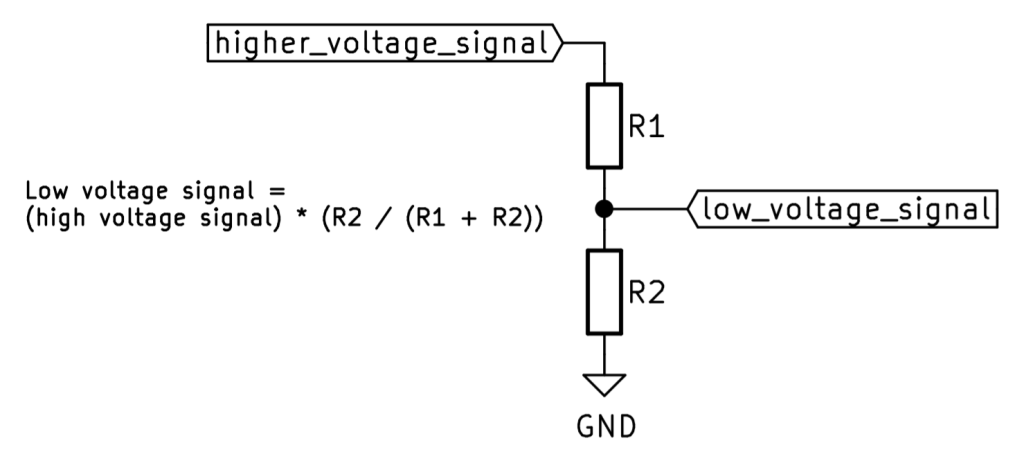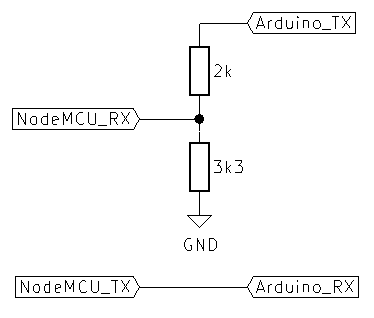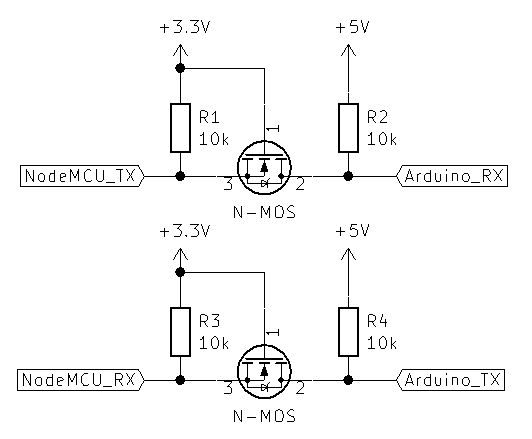Level shifters are used to enable communication between devices operating at different logic levels (voltages). An Arduino Uno runs at 5V but a device like the NodeMCU uses 3.3V logic level. If you were to connect them directly, data sent from the NodeMCU to the Uno might have too much noise to be read as 3.3V is quite close to the minimum voltage required for a logic high. However, if you put 5V into the NodeMCU’s data lines, this could cause permanent damage and stop it working completely.
Don’t be fooled if you don’t use a level shifter and things just work. The damage often takes a little while to take effect, but the damage is still occurring so be sure to use a level shifter if two devices are at different voltages!
Crude level shifting in a hurry
Say you need a project working very quickly, or you aren’t too bothered if things are a tad unstable from time to time, this is a very basic method of level shifting using a potential divider.

As you can see, using UART below as an example, the sending device uses a potential divider circuit in order to reduce the sending voltage of the side which has the higher voltage. The lower voltage device sending to the higher voltage device just has a wire, this leaves room for noise to effect the signal more, but it will probably work and won’t damage anything. This is a very crude method and might not even work with some devices. It will also only work with one way communications as it is a uni-directional situation.

If this method doesn’t work or you want the proper way of level shifting, see step 2
Bi-directional level shifting
The schematic below shows how you should wire things in order to have bi-directional signals and shift send and receive voltages:

If you use suitable logic level MOSFETs for this application (i.e. high frequency logic level MOSFETs) then you will even be able to use this for protocols like I2C which rely on a bi-directional data line which won’t work with the method in step 1.
An example using UART between a 3.3V NodeMCU and a 5V Arduino is shown below

When to use a level shifter
Use a level shifter whenever you see a differing voltage between the sending and the receiving device. Make sure to use the method shown in step 2 whenever you can as even with the low voltage to high voltage shifting, it means that you will see the output as the higher voltage but with the same signal as the lower voltage. In the first example you would see the lower voltage at the higher voltage side which leads to noise issues.
Hopefully this tutorial gives you some insight as to how to improve your circuits or helps you to not damage circuits in the future (it may even explain why circuits went pop in previous projects!)
Written by Joe Orford
Like what you read? Why not show your appreciation by giving some love.
From a quick tap to smashing that love button and show how much you enjoyed this project.

